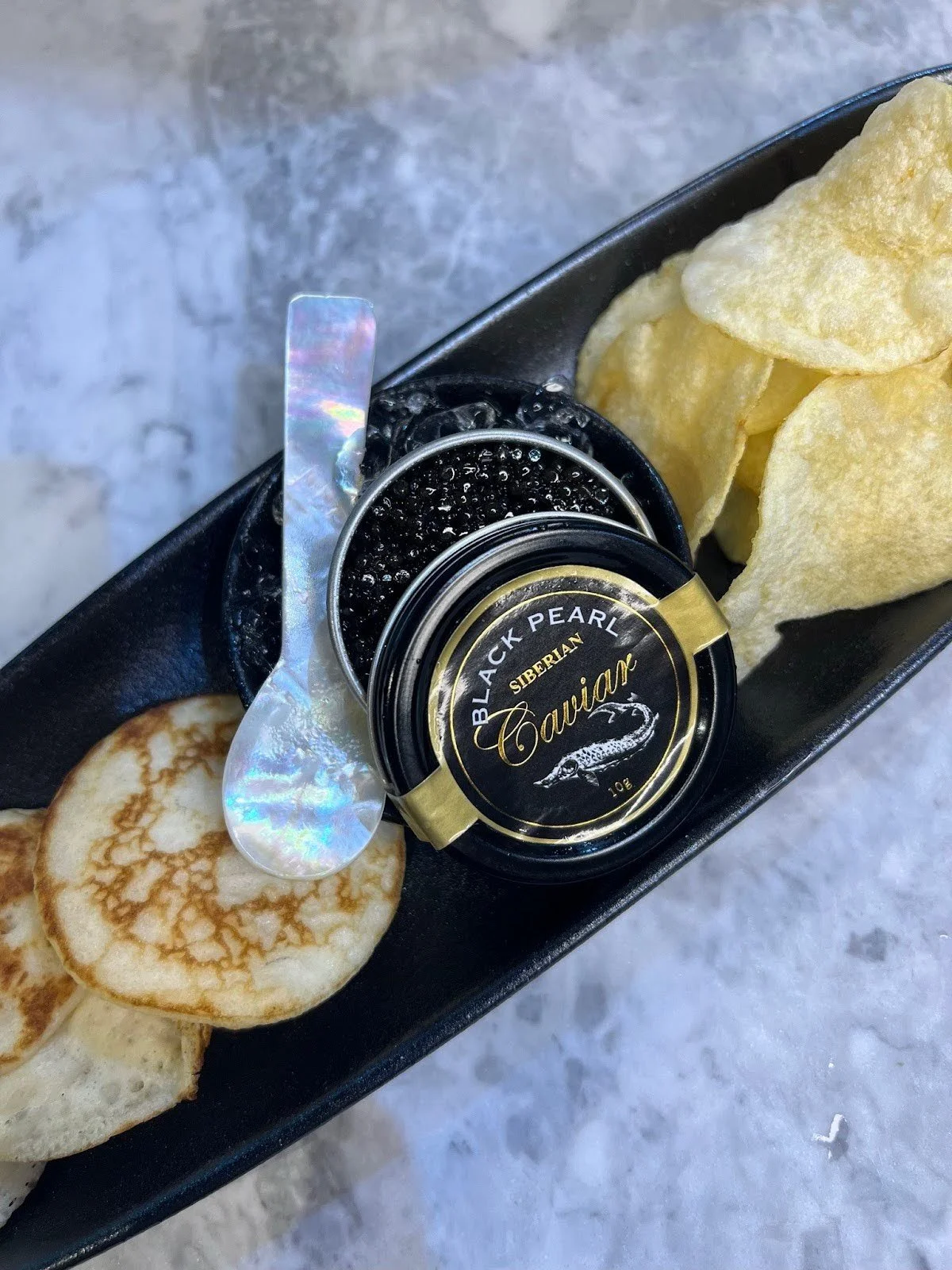Beyond Beauty: A Deep Dive into Caviar with Melissa Male
Caviar expert treats the SOAK community to a special Q&A on the lavish world of caviar.
While self-care at SOAK often focuses on external pampering, true wellness extends to appreciating life's finer experiences. That's why we're excited to present an exciting Q&A with Melissa Male from Calendar Cheese, a valued client with a remarkable knowledge of caviar!
Delve into the interview to unlock Melissa's expertise and discover how to elevate your appreciation for this luxurious delicacy.
Brief history of caviar…
In the 12th century Caviar was used to feed farm animals, as a by-product of the fish, then it was fed to soldiers before battle as such a rich source of protein, ("caviar" translates to "egg of strength"), and finally, by the 19th century, it was one of the most expensive foods in the world!
Fun fact: Caviar is the most protected species in the world - even superseding the White Rhino! It is illegal to fish for this product in the open sea - it can only be caught in Sturgeon farms.
How should caviar be served? What with?
The traditional way to eat caviar is to place a small serving from the back of one’s hand to warm up the caviar (to "blood temperature"), then lick it off! This method releases and intensifies the flavour.
When it comes to serving suggestions, we recommend accompaniments that carry the flavour well - blinis, potato latkes, good quality plain potato chips (we recommend Kettle Chips), with a spoonful of creme fraiche. You can also add egg or chives - NEVER ONION (it's far too overpowering - and ruins the beautiful flavour of the caviar pearls).
Does expensive caviar mean high quality caviar?
Caviar prices are driven by availability/commodity value of the product, and the time it takes to be produced - anytime in between 7 – 20 years.
Caviar pricing is essentially driven by the age of the sturgeon upon production. A good example of this is beluga - it is the most expensive caviar, not necessarily due to it being of a superior quality, (although it is fabulous!), the fish is 18-20 years of age when she reaches maturity - whilst most other varieties are only 7-10 years.
Where should I buy caviar and how do I know which one is good?
Always purchase caviar from a trusted supplier, and check that the caviar has full traceability, certified by CITES (Convention In Trade of Endangered Species).
Vodka or champagne with caviar?
Both. Vodka is a great palate cleanser and champagne has a perfect synergy with the creaminess of caviar.
Why is TikTok so obsessed with caviar right now?
There are plenty of exciting ways to eat caviar and the beautiful shiny pearls are perfect to be filmed and photographed - an influencer's dream - decadent, delicious and gorgeous.
Are there any myths out there about Caviar that need ‘debunking’?
One of the myths is that caviar should ‘pop’. Caviar will only pop if it’s pasteurised, (poor quality caviar), the best quality fresh caviar will melt on the palate.
Any final tips for enjoying caviar?
Always use a mother of pearl spoon (never metal - you're better off using plastic rather than metal - it reacts with the caviar!)
Always serve with Champagne
Share it with loved ones
Want to learn more about caviar? Check out these amazing Instagrams for tips, recipes, and beautiful presentations:
@simonjohnsonprovidore
@luxecaviar
Book our Champagne and Caviar Manicure to experience the ultimate pampering session.

